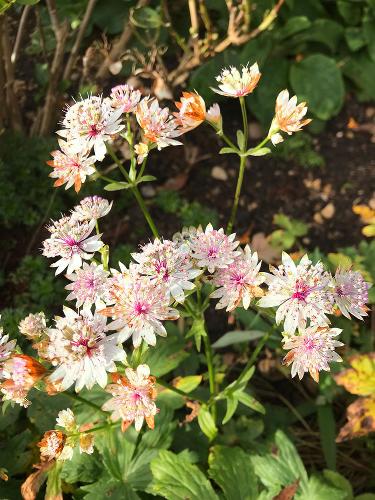Looking for colour in Autumn?
Now being into December it was really heartening to still see so much colour and activity in the garden through most of November. I will admit, in this part of Essex, up until now the weather through November was unusually mild with no climate extremes so far this autumn. Along with some of the design projects I am currently involved in I've still managed to spend some time in my garden, and it's rewarding to see that along with the normal autumnal changes you expect to see, I'm seeing some plants that would typically be finished by now still holding their own.
Astrantia is a perennial I normally associate with summer but some of the varieties I have in my garden are still flowering beautifully in the autumn sunshine.
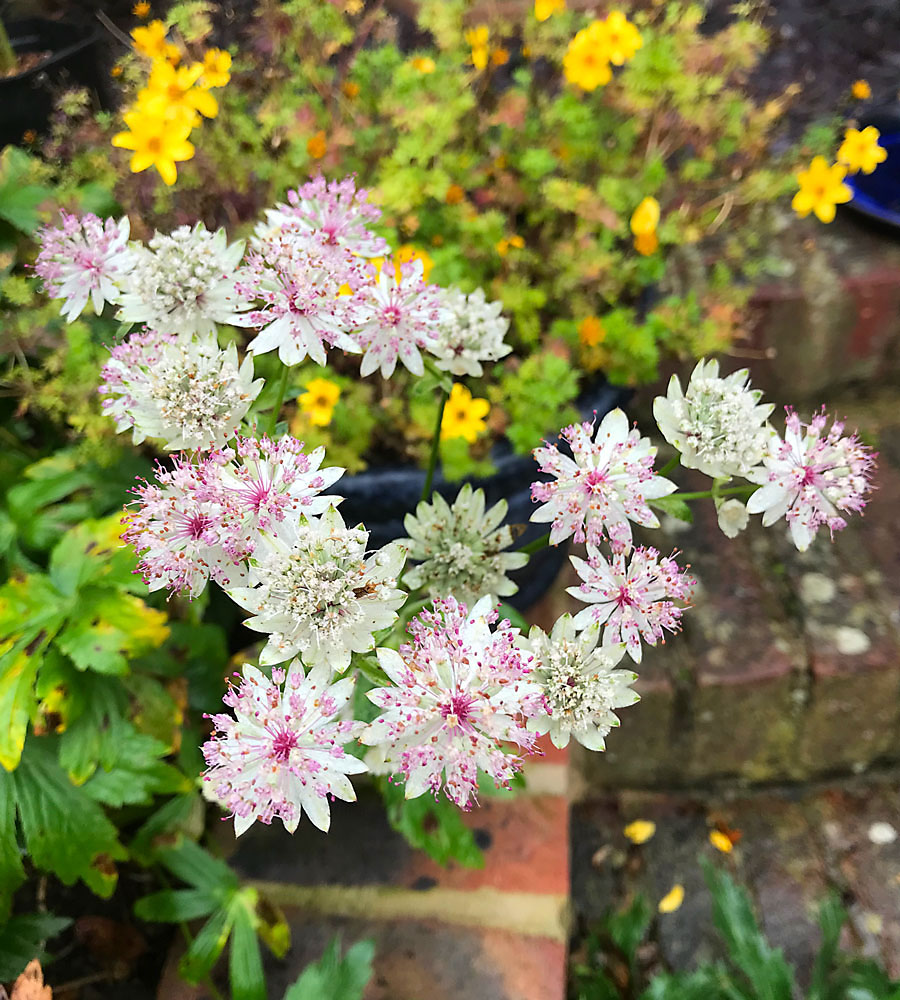
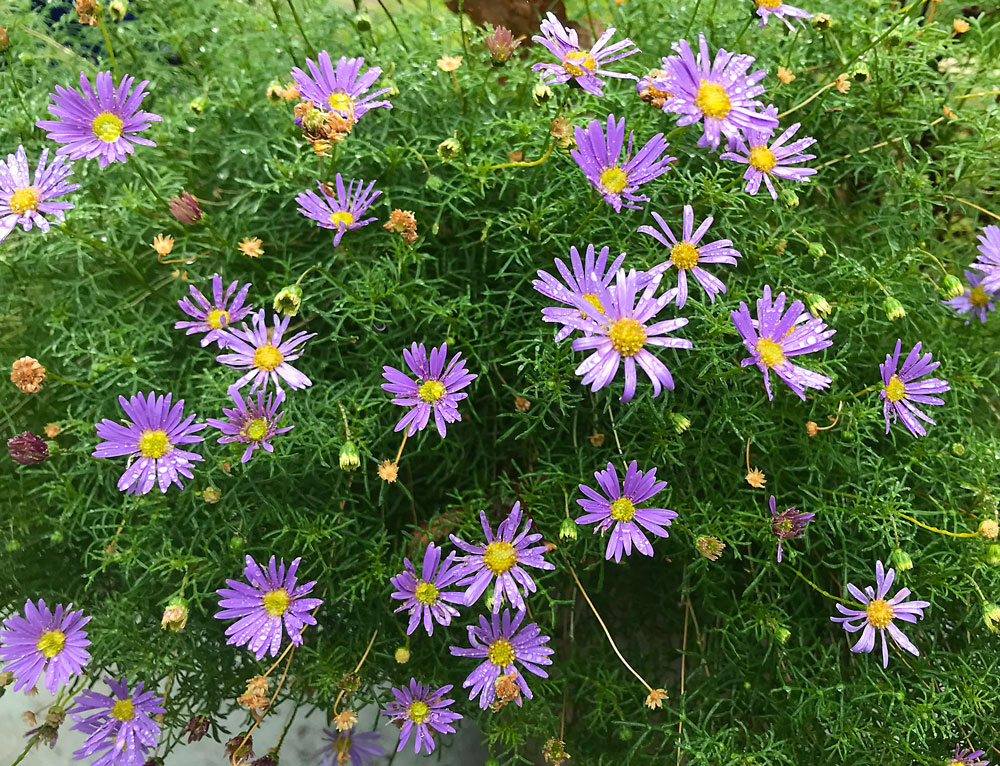
Another plant that is still providing some autumn colour is Brachyscome (pictured left). Whilst this is an annual, I did have some luck with this last year in that although being an annual and half hardy it survived the winter in the pots where I planted it and some plants regrew this year. I would however recommend planting new plants each year. Brachyscome is a bushy low growing annual with profuse flowering and appears pest free. I don't normally go for too many annuals, but this one is really rewarding to have in the garden
One of the more surprising blooms I'm still seeing is that of the Hebe 'Great Orme' (pictured right).
I inherited an old Hebe in my garden from the previous owner and these are pretty tough plants. They're also real magnets for a multitude of pollinators and can tolerate poor soil and shady conditions. They can be relatively short lived, so last year I took cuttings from the one I inherited, which had become quite ‘leggy' and virtually all the cuttings produced new plants. So, I now have quite few around the garden and gave quite a few to friends. They can flower well into late summer, but I wasn't expecting to see new brilliantly rich flowers this late in the year.
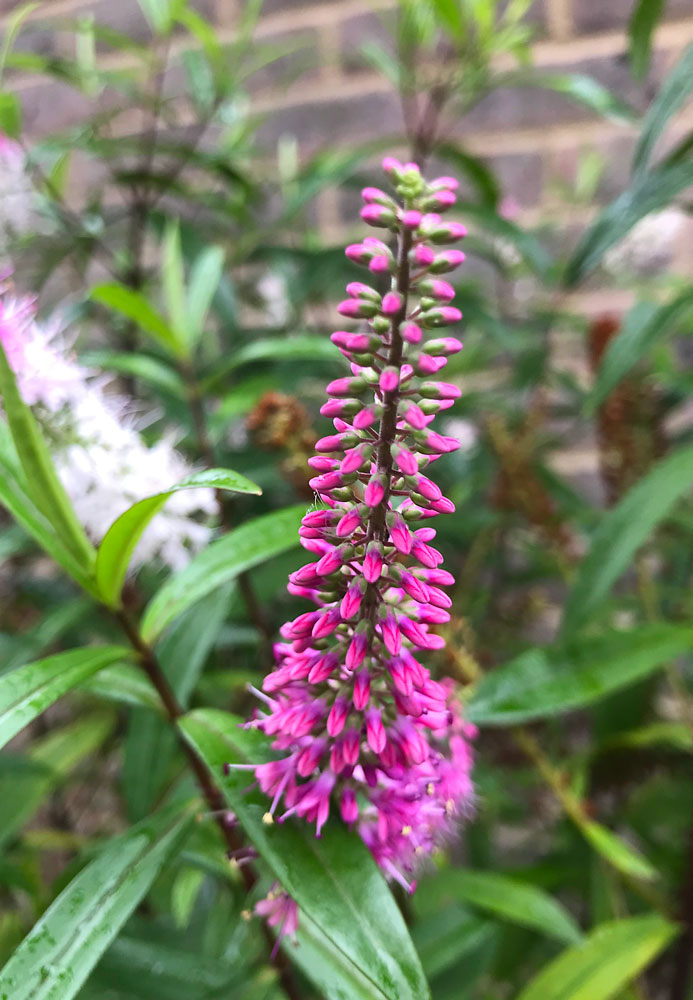
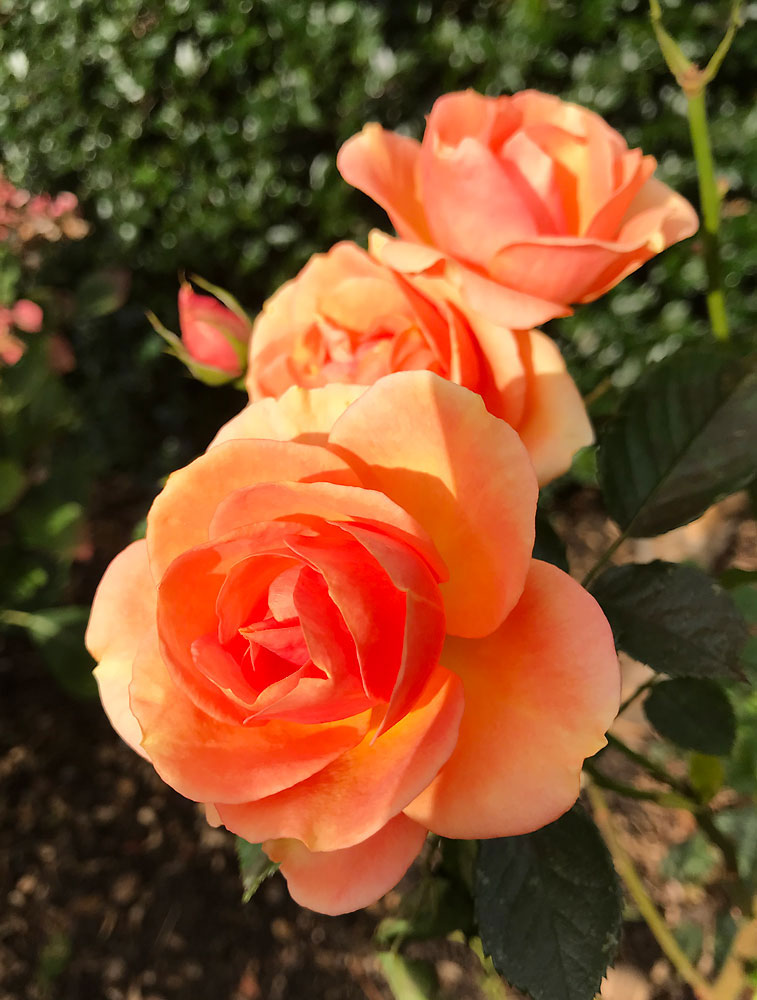
Roses are another plant providing late colour and some of the ones I have are very much ‘supermarket' specials. This Apricot variety was a gift some 20 years ago and my benefactor confessed it was purchased at a supermarket. I rather hastily planted it, not in the best position but it still produced beautiful blooms. Since that time, it's been dug up twice, root trimmed, replanted, and still provides great colour. I took cuttings last year and all survived. I've planted them amongst darker flowering perennials and they really ‘pop' out!
Now for more predictable and reliable colour providers.
Skimmia japonica ‘rubella' is a great evergreen shrub. This too tolerates lower levels of care but still comes back every year with great displays of deep red buds through winter bursting into a profusion of tiny white flowers in late winter/early spring. Bees go mad for the flowers. In fact, when out in the garden around springtime the plant almost audibly ‘hums' from the number of bees enjoying the early supply of nectar.
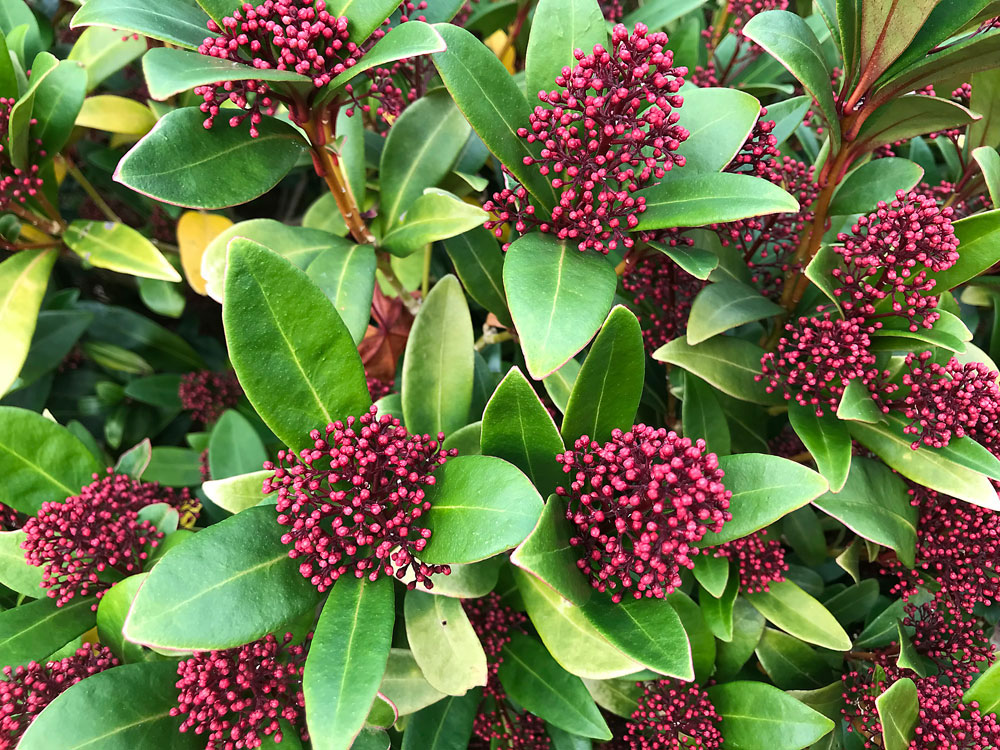
There are few plants which have more notoriety than Acers for delivering autumnal colour. A genus consisting of mainly shrubs and small to medium size trees not only offer predictable autumnal interest, but they also provide changing colour and bark interest throughout the year depending on the variety. Known primarily for preferring acidic soil; I have a few varieties positioned around my garden with some in pots but some also in the ground. Essex isn't renown for having particularly acidic soil but clearly some Acers will tolerate lower levels of acidity. The variety shown below has the rather grand name of Acer palmatum 'Dissectum Atropurpureum'. Again, it's an inherited small tree, now probably over 30 years old but still produces a deep Burgundy red cascade of leaves in spring, turning a brownish red through the summer and then delivering an almost ‘firework' like display of brilliant orange in the autumn.
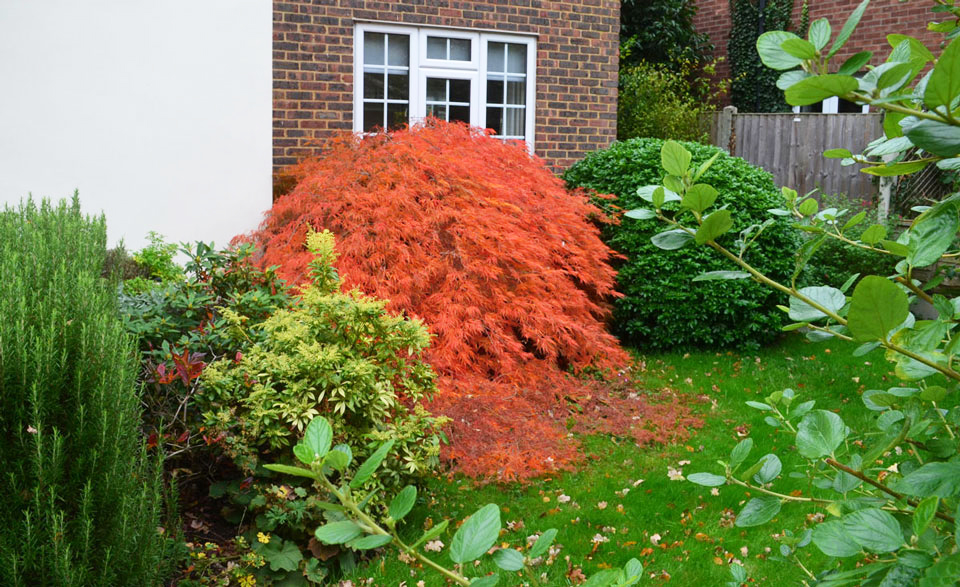
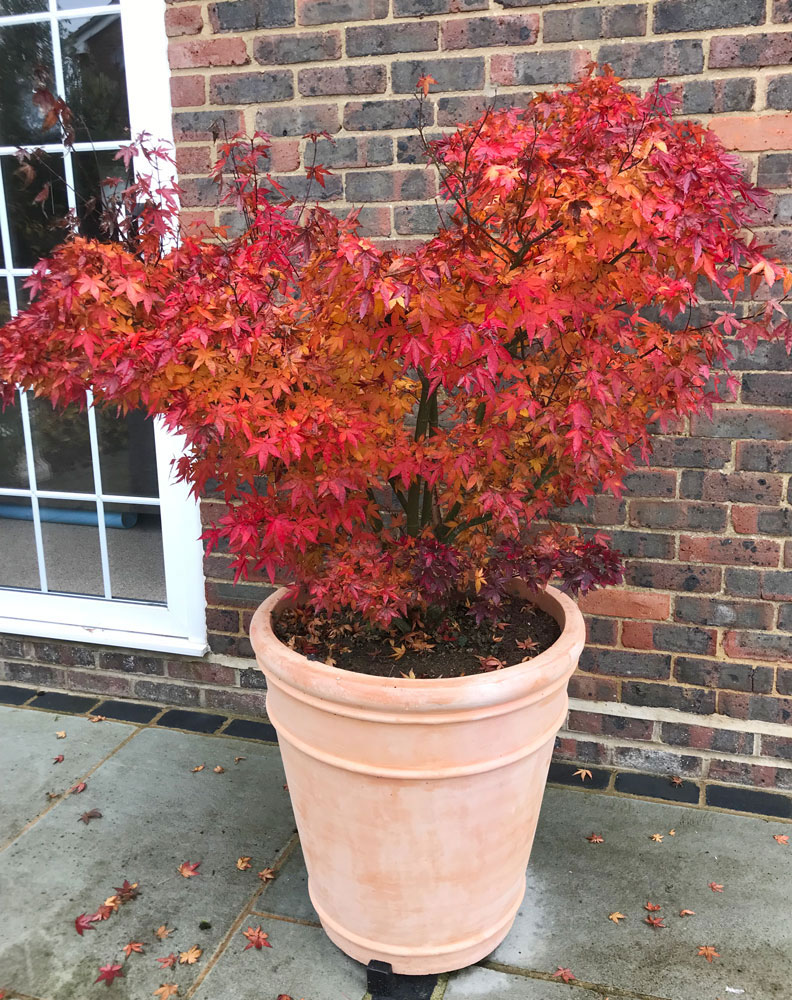
The few Acers I have in pots deliver great autumn colour too. These have the benefit of being planted in ericaceous soil but do require transplanting every 2 to 3 years for the best displays.
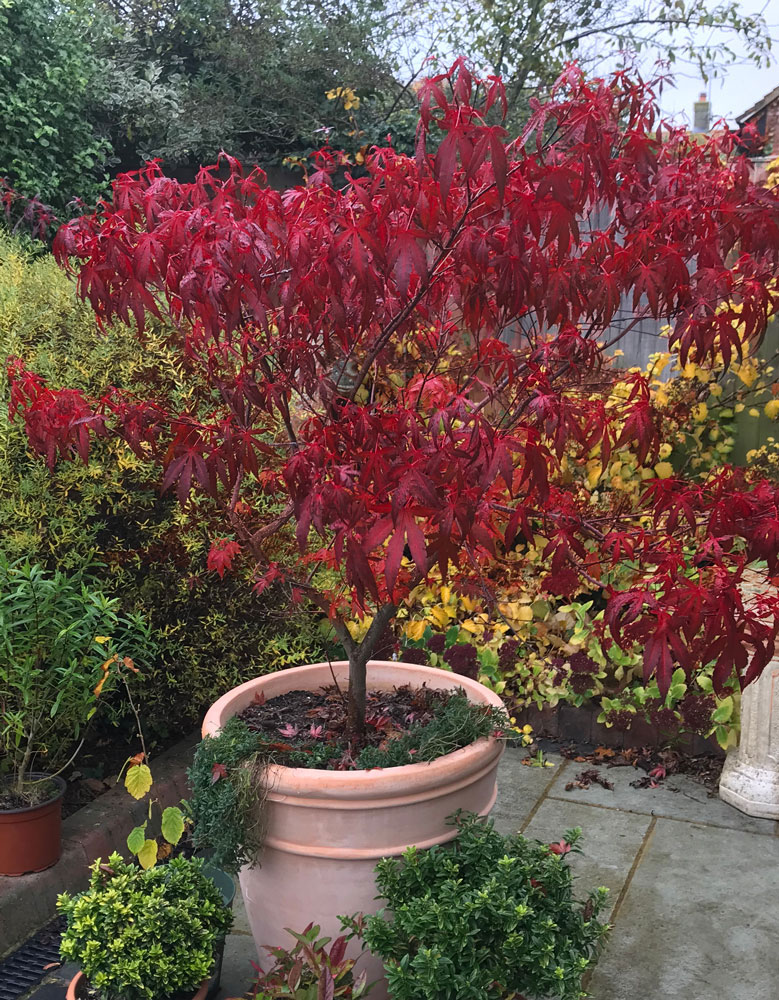
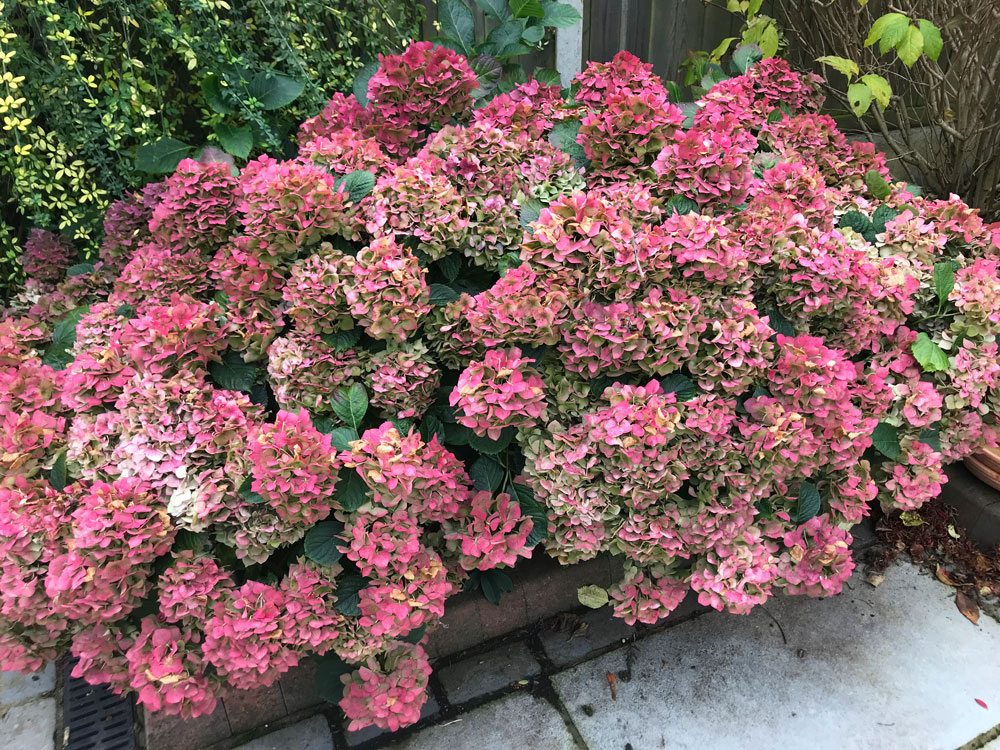
Finally, there is, the maybe, slightly ubiquitous Hydrangea.
I'm aware that Hydrangeas are not everyone's favourite due to their almost over exuberant displays during the summer but there are many varieties to choose from and cultivation again is pretty easy. The Hydrangea macrophylla pictured left provides violet to pink flowers during the summer and if the 'mop' heads are left through into the autumn they develop into this wonderful russet pink display, eventually turning a ‘petrified' golden brown display of skeletal petals in the depths of winter.
So, achieving autumn colour, isn't too taxing especially if the weather is reasonably kind and once the plants have dropped all their leaves or finally lost all colour, there will be others to brighten up the winter days too. Look out for my next blog..

